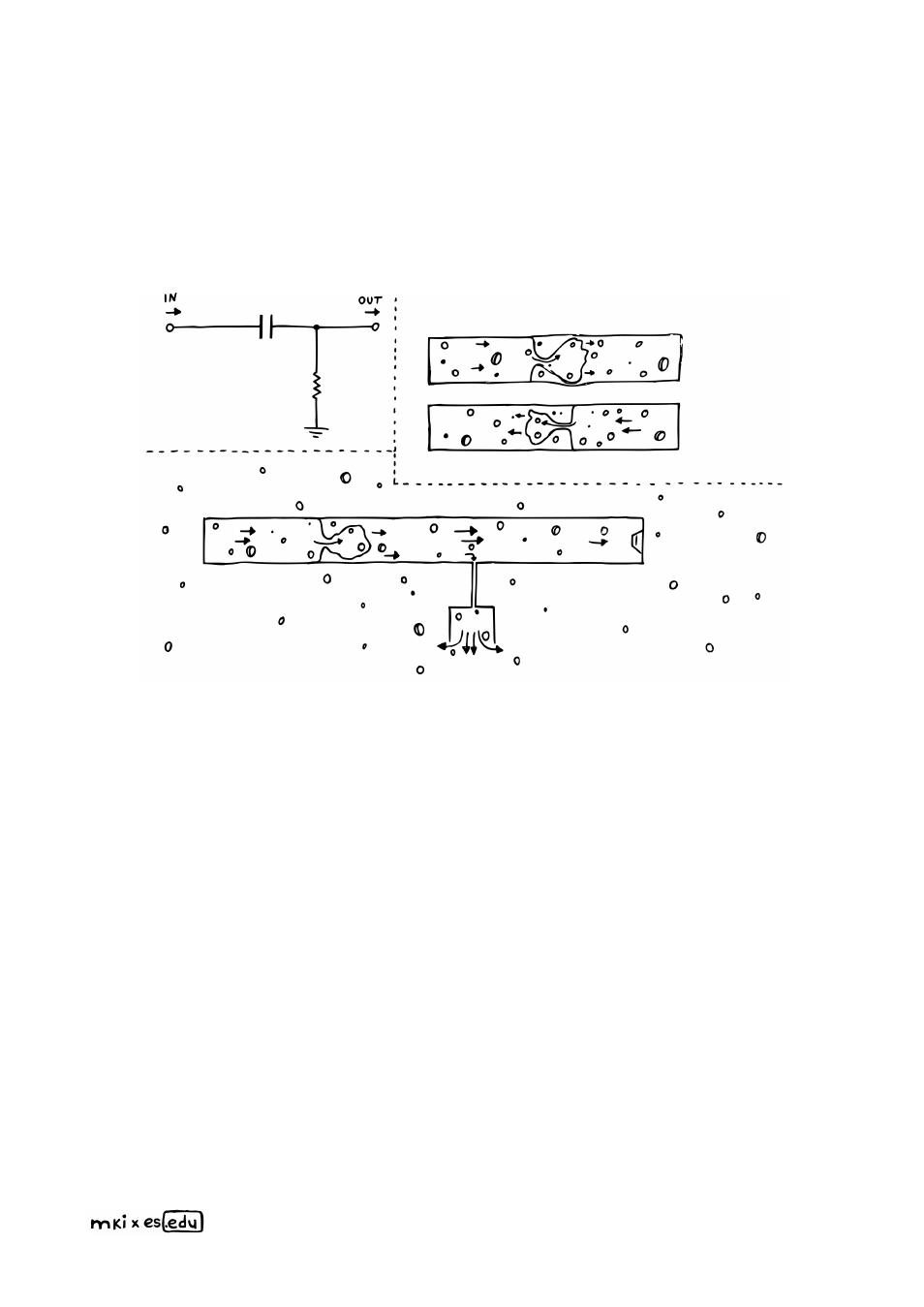Ac coupling – Erica Synths EDU DIY Dual VCA Eurorack Module Kit User Manual
Page 38

AC COUPLING
What is AC coupling –
and how does it work? Imagine two adjacent pipes with a balloon
between them. Now, no water can get from one pipe into the other, since it’s blocked by
the balloon. But, and that’s the kicker,
water from one side can still push into the other
by bending and stretching the balloon, causing a flow by displacement
.
Next, we’ll bring in a resistor after the coupling point, going straight to ground.
This acts
like a kind of equalizing valve
. Now imagine we apply a steady 5 V from one side. Then
on the other side, we’ll read 0 V after a short amount of time. Why? Because we’re
pushing water into the balloon with a constant force, causing it to stretch into the other
side, displacing some water. If we didn’t have the equalizing valve there, we’d simply raise
the pressure. But since we do have it, the excess water can drain out of the system. Until
the pressure is neutralized, and no water is actively flowing anymore.
Okay, so now imagine that the voltage on the left hand side starts oscillating, let’s say
between 4 V and 6 V. When we start to go below 5 V, the balloon will begin contracting,
basically pulling the water to the left. This will create a negative voltage level in the right
hand pipe – like as if you’re sucking on a straw, making the voltage there drop below 0 V.
Then, once the pressure on the other side rises above 5 V, the balloon will inflate and
stretch out again, pushing water to the right. And the pressure in the right hand pipe will
go positive, making the voltage rise above 0 V.
We’ve re-centered our oscillation
around the 0 V line.
Okay, but what about the resistor? If current can escape through it,
doesn’t that mess with our oscillation? Well, technically yes, but practically, we’re
choosing a narrow enough pipe to make the e
ff
ect on quick pressure changes negligible!
38
